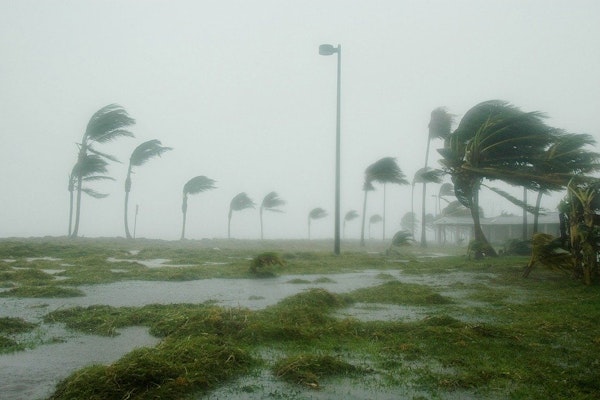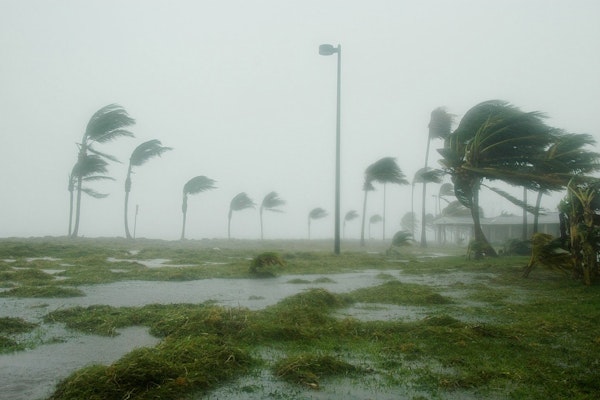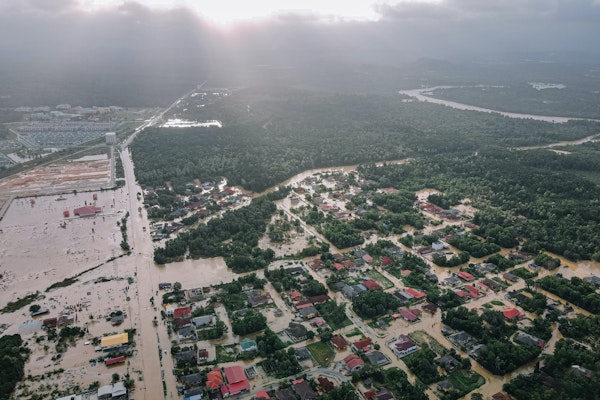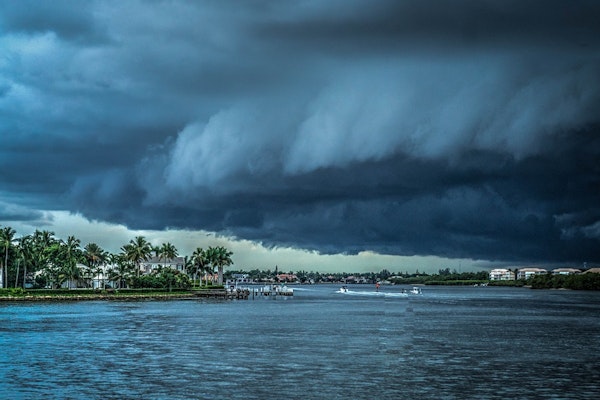
Rising Inland Flood Risk Demands Urgent Attention in U.S.
The Insurance Information Institute’s latest report highlights the increasing flood risks faced by inland areas due to shifting weather patterns. Hurricanes, tropical storms, and thunderstorms are pushing the boundaries of flood-prone regions, underscoring the need for better insurance coverage, flood resilience, and mitigation strategies to bridge the protection gap in non-coastal communities.
November 14, 2024
Catastrophe
Legislation & Regulation
Property
Risk Management
Florida
Georgia
Kentucky
New Jersey
New York

Florida Hurricane Damage Claims Reach $4.775 Billion After Hurricanes Helene and Milton
Insurance claims in Florida from Hurricanes Helene and Milton have reached $4.775 billion, up $169 million from last week’s total. The storms have left extensive residential and commercial property damage, according to the Office of Insurance Regulation.
November 12, 2024
Catastrophe
Insurance Industry
Legislation & Regulation
Property
Florida
Georgia
North Carolina
South Carolina
Tennessee

Widespread Flooding from Hurricane Helene Spotlights Inland Insurance Gaps
The devastation from Hurricane Helene reveals a significant inland flood-protection gap, particularly in flood-prone communities without sufficient insurance coverage, where misinformation and funding challenges further slow recovery efforts.
October 28, 2024
Catastrophe
Insurance Industry
Legislation & Regulation
Risk Management
Florida
Georgia
Kentucky
New Jersey
New York

Climate Change Intensifies Hurricane Helene’s Impact on Coastal and Inland Communities
Hurricane Helene, a Category 4 storm, caused catastrophic flooding and destruction from Florida’s coast to the Southern Appalachians. Research shows climate change intensified its rainfall, winds, and flooding risks.
October 11, 2024
Catastrophe
Legislation & Regulation
Property
Risk Management
Florida
Georgia
North Carolina
South Carolina
Tennessee

Hurricane Milton Could Deplete U.S. Insurers’ Catastrophe Budgets, Global Reinsurers Likely to Endure
Hurricane Milton, a Category 5 storm expected to strike Florida, threatens to deplete U.S. property/casualty insurers’ catastrophe budgets and test global reinsurers’ limits, though most are expected to weather the storm without significant capital impacts.
October 10, 2024
Catastrophe
Insurance Industry
Property
Risk Management
Florida
Georgia
North Carolina
South Carolina

Waffle House Index Signals Severe Impact from Hurricane Milton in Florida
The Waffle House Index, a quirky yet reliable gauge of storm severity, shows widespread closures across Florida as Hurricane Milton approaches, warning of significant damage and disruption.
October 9, 2024
Catastrophe
Property
Risk Management
Technology
Florida
Georgia
North Carolina
South Carolina

Federal Flood Maps Lag Behind Climate Disasters, Leaving Millions at Risk
As climate-intensified storms expose the limitations of FEMA’s outdated flood maps, millions of Americans may face flood risks without adequate insurance protection, especially in areas prone to heavy rainfall.
October 9, 2024
Catastrophe
Legislation & Regulation
Property
Risk Management
Florida
Georgia
North Carolina
South Carolina

Hurricane Milton Threatens Central Florida with Potential Direct Hit
Hurricane Milton, set to make landfall as a Category 3 storm, could bring catastrophic impacts to Florida’s Gulf Coast, particularly the Tampa area, just two weeks after Hurricane Helene’s devastation.
October 9, 2024
Catastrophe
Insurance Industry
Property
Risk Management
Florida
Georgia
North Carolina
South Carolina

Hurricane Milton Strengthens to Category 4, Poised for Midweek Florida Landfall
Hurricane Milton, now a powerful Category 4 storm, is set to make landfall midweek in Florida, bringing life-threatening storm surges, heavy rain, and strong winds.
October 7, 2024
Catastrophe
Legislation & Regulation
Property
Risk Management
Florida
Georgia
North Carolina
South Carolina

Hurricane Helene Losses Projected in Billions, But US P&C Insurers Expected to Withstand Impact
Hurricane Helene’s estimated insured losses range between $5 billion and $9 billion, but S&P Global believes the event will affect earnings without jeopardizing the capital of US property and casualty insurers.
October 4, 2024
Catastrophe
Insurance Industry
Property
Risk Management
Florida
North Carolina
South Carolina

FEMA Faces Funding Shortage as Hurricane Helene Devastates the Southeast
FEMA is running low on disaster relief funds as it responds to Hurricane Helene, which caused severe damage across several Southeastern states. Congress may need to pass additional funding to sustain relief efforts.
October 4, 2024
Catastrophe
Legislation & Regulation
Property
Risk Management
Florida
Georgia
Louisiana
North Carolina
South Carolina

Dockworkers Reach Tentative Deal, Strike Suspended Until January
U.S. dockworkers have suspended their strike after reaching a tentative agreement with terminal operators, securing a wage increase and agreeing to continue negotiations in January.
October 4, 2024
Legislation & Regulation
Litigation
Risk Management
Alabama
Florida
Georgia
Louisiana
Maryland

Hurricane Helene’s Economic Impact Could Reach $160 Billion Due to Infrastructure Destruction and Business Losses
Economic estimates for Hurricane Helene project up to $160 billion in damage, driven by widespread infrastructure failure, property loss, business disruption, and long-term recovery costs.
September 30, 2024
Catastrophe
Insurance Industry
Property
Risk Management
Florida
Georgia
Kentucky
North Carolina
Ohio

Helene Hits Florida as Category 4 Hurricane, Unveils Critical Flood Insurance Gap
Hurricane Helene’s catastrophic flooding from Florida to North Carolina exposes the serious lack of flood insurance coverage among homeowners, especially in inland areas, highlighting the increasing risks from extreme weather events.
September 30, 2024
Catastrophe
Legislation & Regulation
Property
Risk Management
Florida
Georgia
Kentucky
North Carolina
South Carolina

Hurricane Helene Targets Florida with Powerful Storm Surge and Inland Flooding Threats
Hurricane Helene is intensifying as it heads toward Florida’s Gulf Coast, threatening life-threatening storm surges, widespread flooding, and strong winds that will reach far inland across the Southeast.
September 25, 2024
Catastrophe
Litigation
Property
Risk Management
Alabama
Florida
Georgia
Kentucky
North Carolina





